On Staten Island, flood control plans threaten a haven for rare plants
Ten years after Superstorm Sandy struck the east coast, naturalists worry a government-funded storm mitigation plan will wipe out a historic ecosystem
Marlowe Starling • May 5, 2023
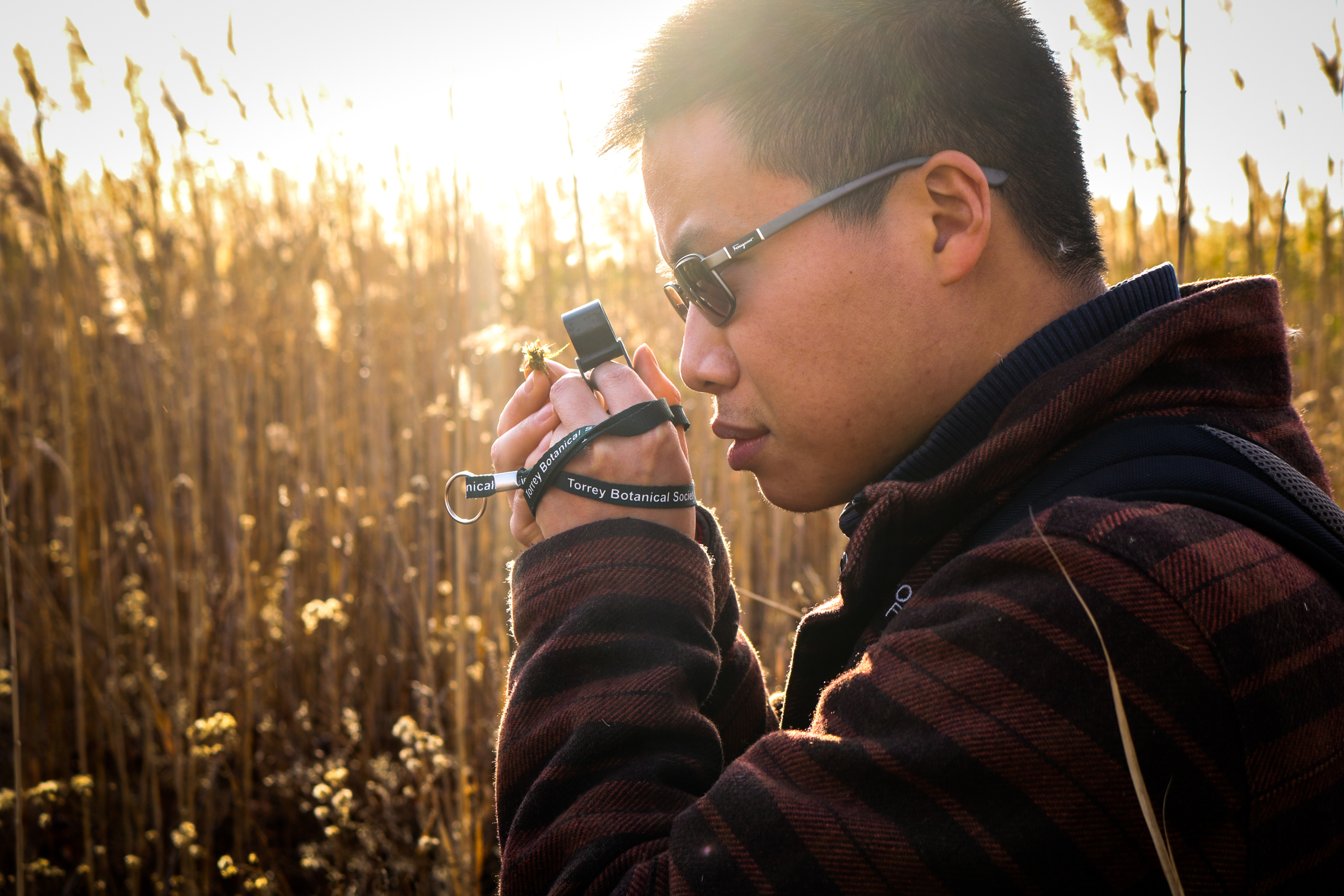
Zihao Wang, a botanist who studies rare plants across New York City, examines a piece of moss in a small coastal meadow next to Oakwood Beach in Staten Island. [Credit: Marlowe Starling]
On a chilly December afternoon, a small team of botanists and volunteer naturalists congregated on Staten Island’s Oakwood Beach. They had one overarching goal: finding rare, tiny plants before they’re gone.
“Just thinking about it makes my heart beat faster,” said trip co-leader Tohmi Barrett, who added that her personal goal for the day was to find some quillwort in the swampy meadow beside the beach.
But the group’s high spirits were dampened by the knowledge that a federal flood-control project may destroy an ecosystem that is a rare relic of the region’s pre-industrialized shoreline. The project was proposed in the wake of devastation that hurricanes and other major storms like Superstorm Sandy wrought ten years ago along the New York coast, and construction is set to start soon.
“I kind of look at this place as a future extinction,” said Alex Kanonik, the Jamaica Bay Program Director at the American Littoral Society and one of the nature walk’s participants. “We’re losing a really important part of New York City’s natural history.”
She and other participants say the estimated $615 million plan to harden Staten Island’s eastern shore with levees, seawalls, retention ponds and raised roads will destroy most of the remaining coastal meadows and marshlands. These ecosystems offer a haven for lesser known plant species like marsh straw sedge, Turk’s cap lily, slender blue iris and Canadian burnet. Observations recorded on the free citizen-science app iNaturalist suggest that, across all of New York City, some of these species are only found at this location, Barrett said. Construction is expected to start within the next two years, according to a report from the U.S. Army Corps of Engineers, which says the project is needed to protect 30,000 people and more than 7,000 structures in the low-lying area from storm surge and flooding. During Superstorm Sandy, the area was swamped by 12-foot-high floodwaters.
The dispute over the hardening of Oakwood Beach is part of a much larger conflict over how New York and other highly populated coastal cities should respond to the threat of sea level rise and more frequent storms. While many coastal cities are increasingly turning to sea walls and other human-built barriers to try to fend off future disasters, some conservationists and scientists say those efforts are environmentally destructive and doomed to fail in the long run. Instead, they advocate managed retreat from the coasts and nature-based solutions such as artificial wetlands to absorb the power of incoming storms.
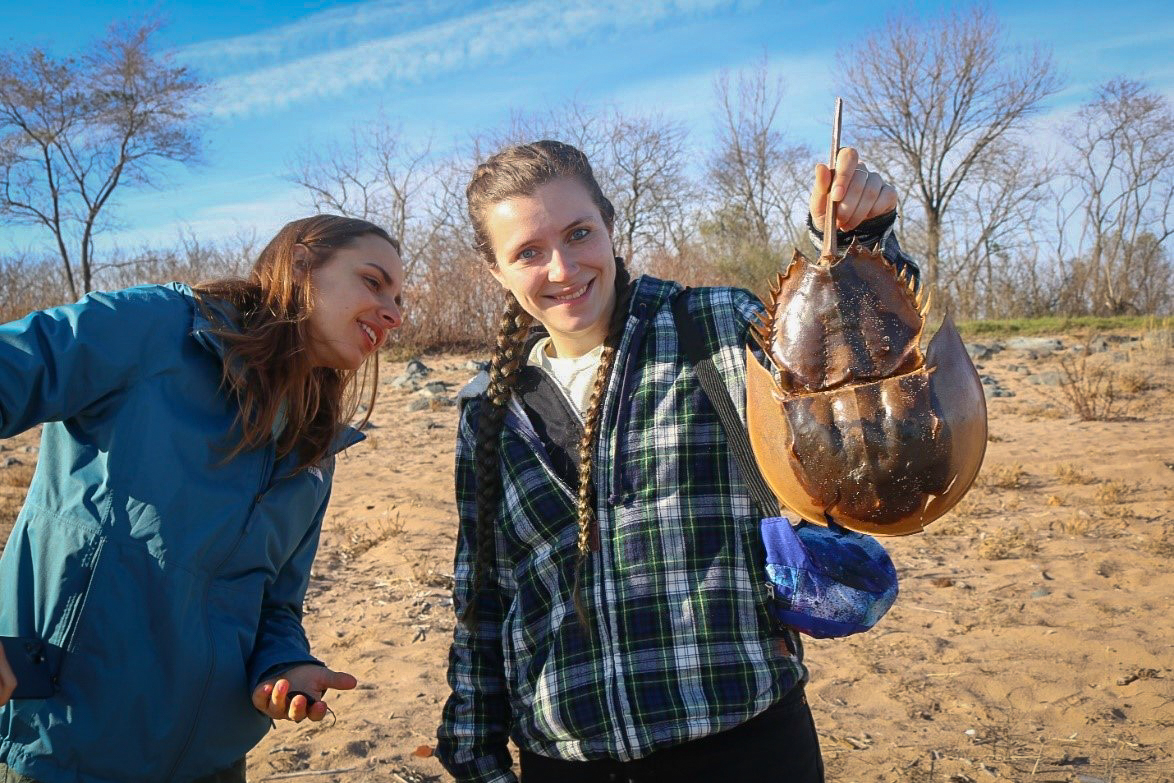
Trip leaders Tohmi Barrett, left, and Lydia Paradiso, right, admire a large horseshoe crab they found on Oakwood Beach. Dozens of dead horseshoe crabs littered the beach. [Credit: Marlowe Starling]
The December nature hike was organized by two local conservation groups, the New York Botanical Garden’s EcoFlora and the Torrey Botanical Society. To document the plants they found, participants used the iNaturalist app to upload photos of plants and wildlife for identification.
The team chose to explore Oakwood Beach, a swampy sliver of oceanfront in the shadow of a large sewage treatment plant, because it’s often overlooked by environmentalists. “We were trying to see what areas of the city have less observations,” trip co-leader Lydia Paradiso explained. “We wanted to go out and see why that was.”
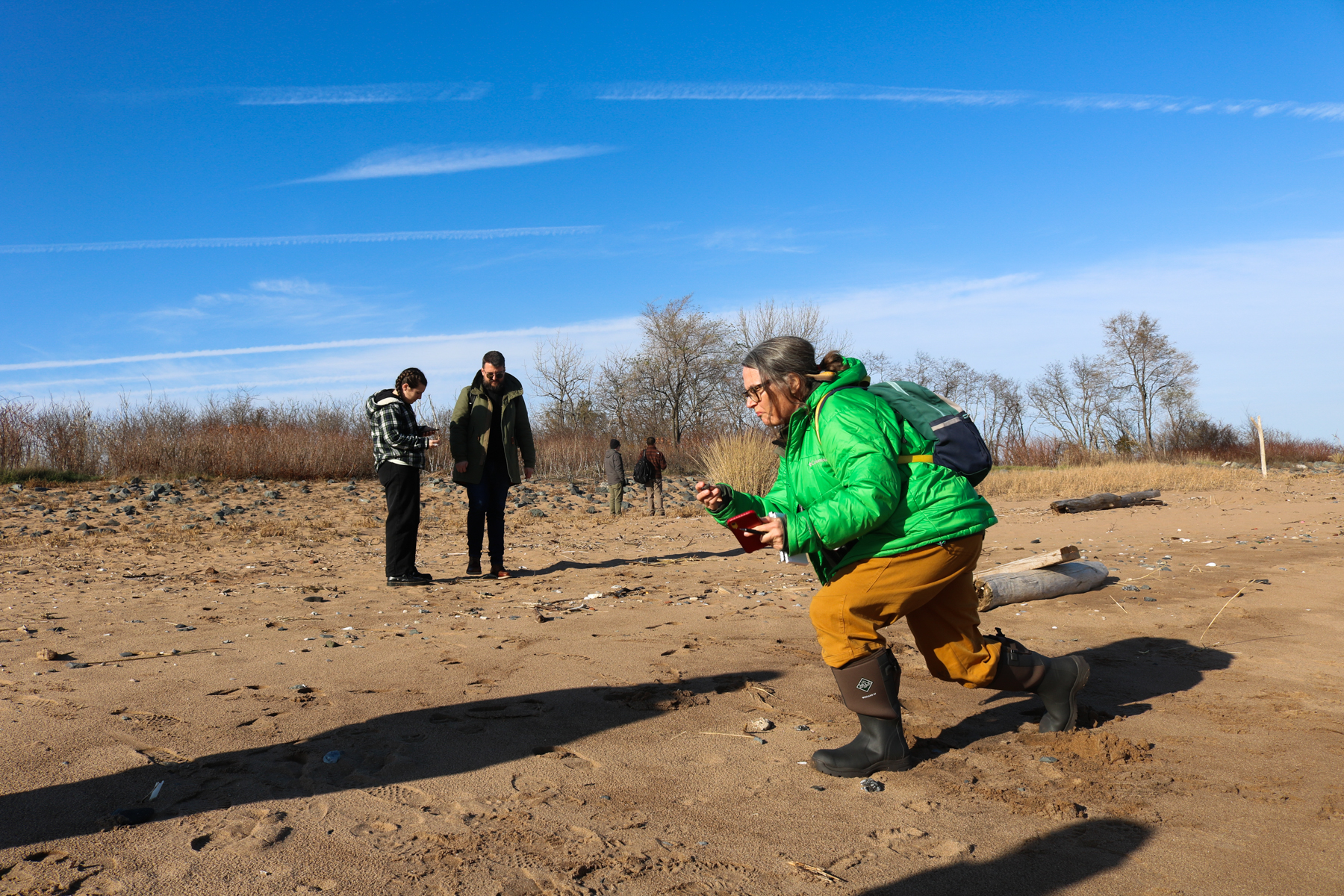
Participants of the nature walk got right to work on Oakwood Beach, using cell phones to take photos of their favorite beach treasures: shells, driftwood and unidentified plants among them. They often upload their photos to iNaturalist, a citizen-science plant and animal identification app. [Credit: Marlowe Starling]
Oakwood Beach’s coastal meadows are isolated “islands” among a sea of phragmites, which are tall, invasive wetland plants. But these widespread plants only emerged after heavy urban development. The wetland and its native plant community evolved over thousands of years. Today, it’s like an ecological throwback resembling New York’s historic ecosystem before Dutch colonization and widespread urbanization, Jamaica Bay’s Kanonik explained.
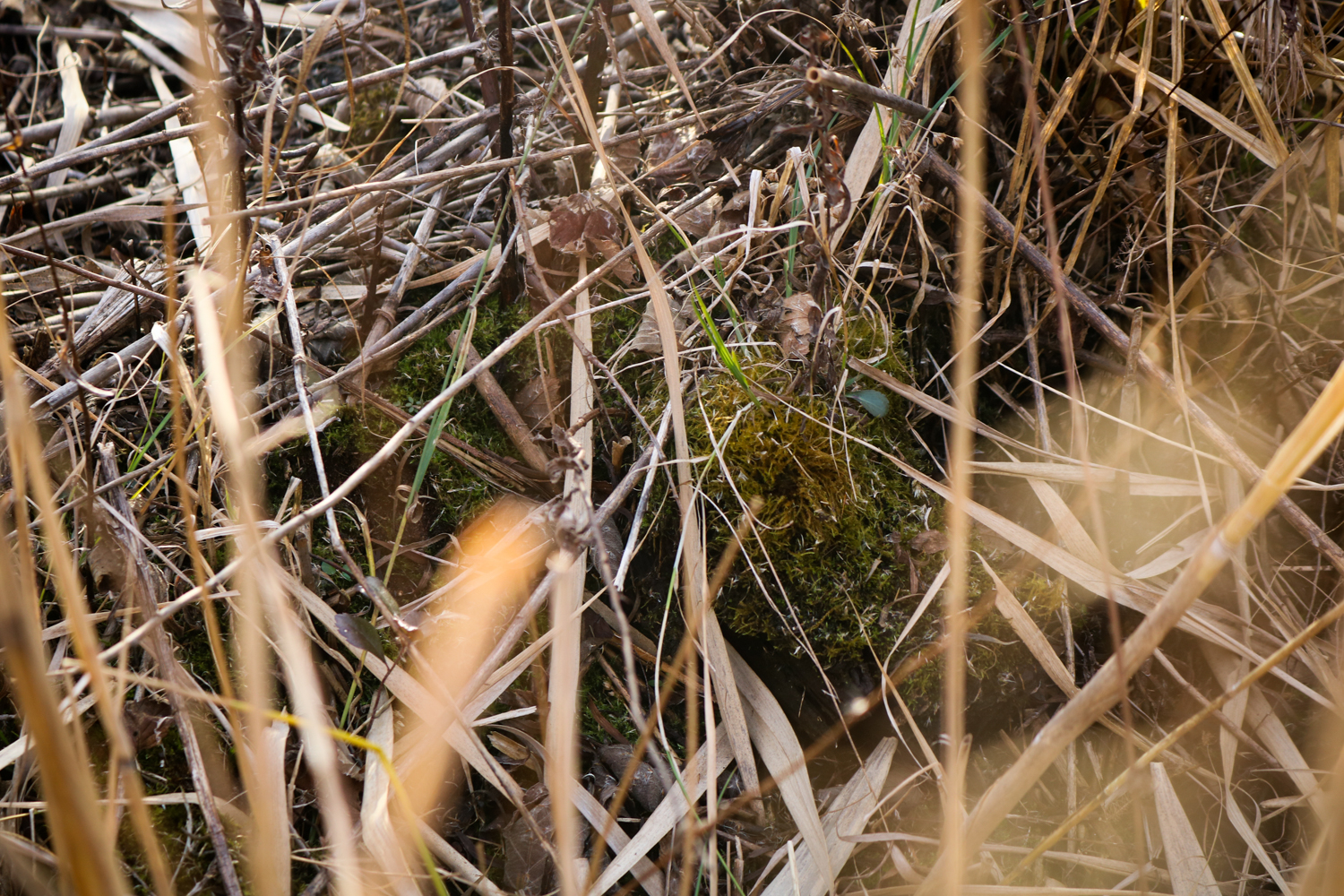
Coastal meadows are a haven for small plants like mosses, which are shown growing on the soil amid stalks of invasive phragmites. [Credit: Marlowe Starling]
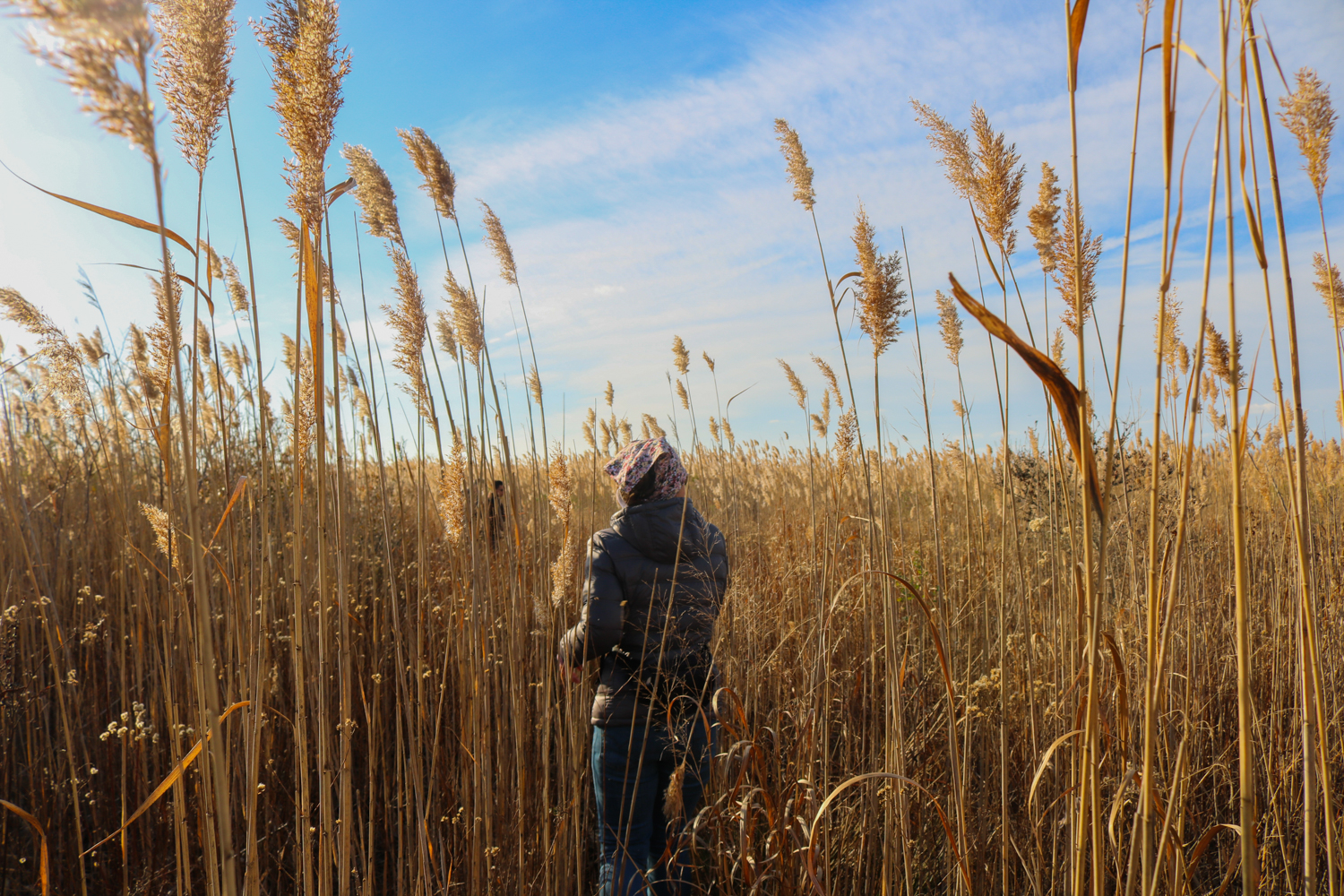
Alex Kanonik, a New York City conservationist who joined the walk, braves burs and thorns among an overgrown phragmite field. “It acts like cancer on the landscape,” she said. The phragmites open up into an island of coastal meadow habitat that harbors rare plants. [Credit: Marlowe Starling]
When the Army Corps begins construction, it will alter the local hydrology, Kanonik explained. As a “wet meadow,” this habitat retains freshwater in the soil thanks to native plants’ extensive root systems, she adds. But the Army Corps plans to bulldoze and dig out this wetland to create a retention pond to hold seawater that flows over from the ocean. Although it is intended to protect nearby homes from future coastal flooding and storm surge, destroying this ecosystem is like destroying an old growth forest, she says: Because it has evolved over thousands of years, disrupting the soil microbiome and removing native plants could have unintended consequences on other species.
“It’s like saving an arm and a leg while destroying the rest of your body,” Kanonik said.
An Army Corps representative emailed Scienceline a link to a project plan published in 2016 but did not respond to subsequent requests for an interview. A representative of the New York Department of Environmental Conservation, a project partner, also declined an interview but wrote in an email that the department looks forward to protecting Staten Island communities from the ongoing threat of climate-driven storms.
Kanonik proposes a different strategy: Pay residents to relocate, and turn the area into a park where visitors can learn about the region’s ecology. This type of relocation – known as managed retreat – already began in 2013, when the government offered buyouts to Oakwood Beach residents. Although many of them left, some decided to stay. After people’s abandoned homes were demolished, invasive species like phragmites took over the landscape. Today, Oakwood Beach’s neglected remnant community is treated like a dumping ground.
Staten Island is especially vulnerable to this kind of landscape transformation, according to EcoFlora’s Barrett. “It has a different landscape than some of the other boroughs — really polluted in a lot of the areas, but also at the same time really green and flourishing.”
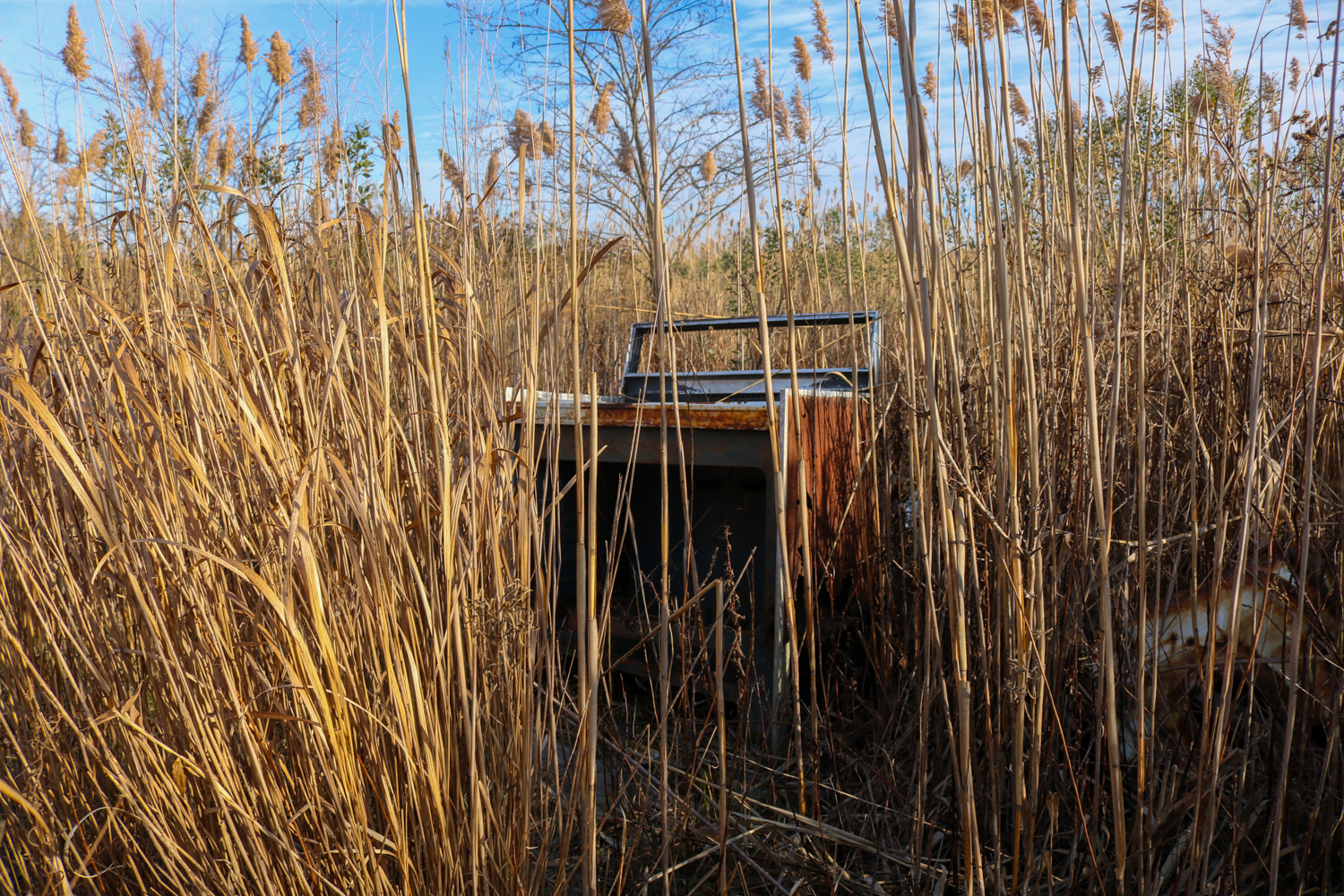
This abandoned appliance — probably a dishwasher — was among the household and electric waste scattered throughout the phragmite fields adjacent to Oakwood Beach. “This is what people see this as: a dumping ground,” Kanonik said. [Credit: Marlowe Starling]
To document the remaining plant life, a key goal for the nature walkers was to find lycophytes and small ferns, which are all part of a group of plants called pteridophytes. As of December 2022, there were only a handful of reliable observations of lycophytes in New York City — yet there are thriving populations outside of the city during the winter, Barrett said.
“A lot of that is because of their small, diminutive size, but also because they can’t really outcompete urbanization and they need small, undisturbed areas,” she added.
Oakwood Beach hosts a unique community of plants that are well adapted to soil with higher salinity “because it’s soaked up against the coast,” Barrett explained. These plants are often overlooked, Kanonik says, due to what she calls “plant blindness,” or the tendency to focus only on protecting charismatic animals rather than flora. There are about a dozen plant species in this area listed as endangered at both the state and federal level.
“Nobody cares unless you’re a panda,” Kanonik said. “No one cares about plants.”
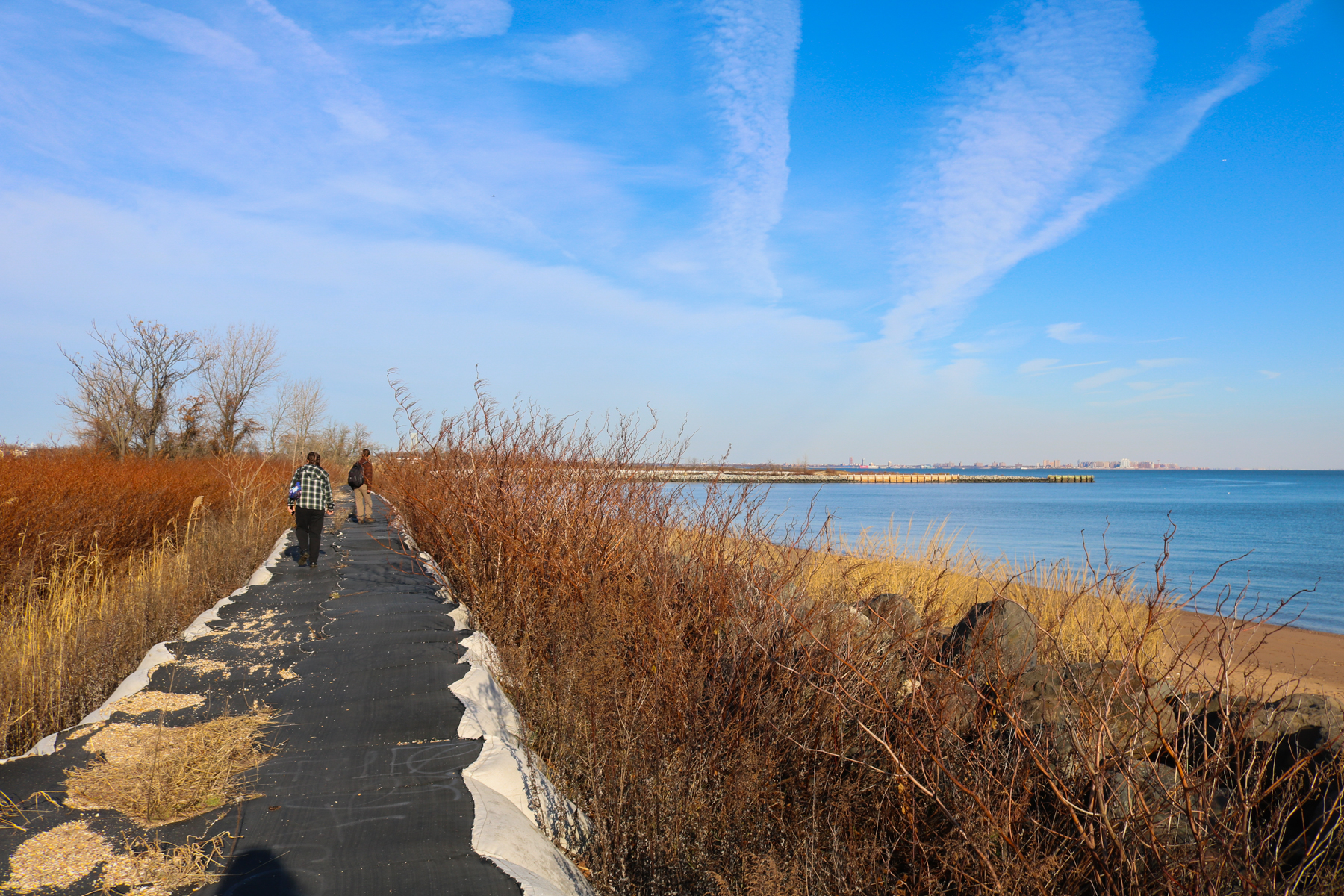
The U.S. Army Corps of Engineers built this seawall after Superstorm Sandy to help protect neighboring communities from coastal flooding and storm surge. The Army Corps’ future plans to create a retention pond will wipe out local coastal meadows and destroy the natural flow of water, which naturalists worry will kill off rare and historic plant species. [Credit: Marlowe Starling]
While the management plans may address short-term concerns, Kanonik isn’t convinced it’s worth killing off part of New York’s natural history — or that the mitigation plans will effectively help in the long run. “We’re not gonna be able to battle climate change in that kind of way,” she said. Instead of using human-made structures, she suggests environment-friendly “green infrastructure” would be more effective, like the Bluebelt system in other parts of Staten Island. The Bluebelt’s structures manage stormwater by prioritizing native plants and wetland areas to soak up and retain water underground.
Wang, the botanist, adds that these ecosystems are meant to flood naturally. “Now we suddenly want to ask nature to ‘stop flooding’ so we can artificially minimize risk, even though that means wiping out many fellow species from their last (refuges),” he wrote in an email. “We will not get them back if we lose them.”
1 Comment
What an excellent article! Appreciate this so much